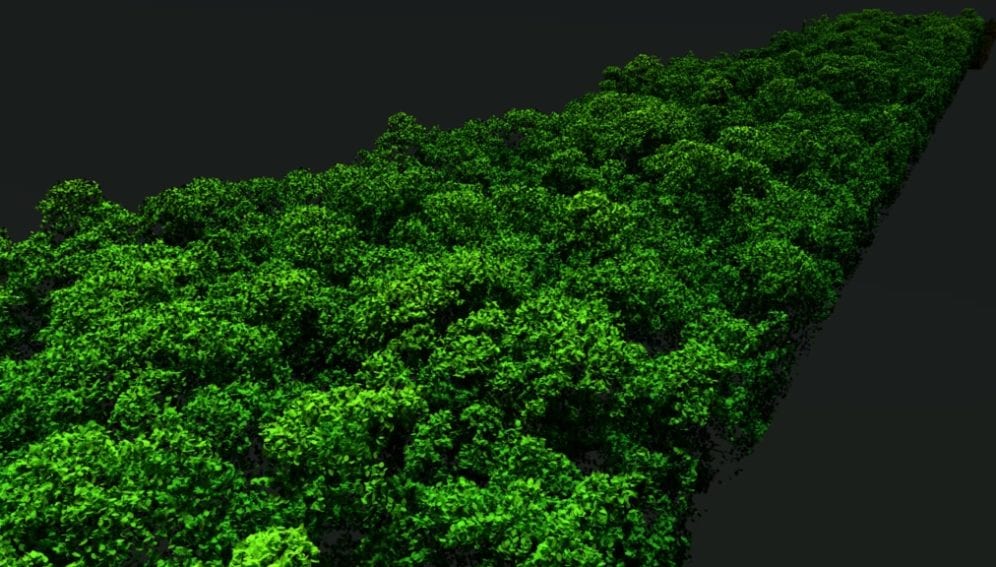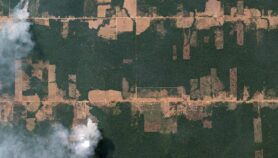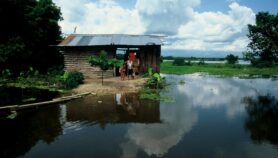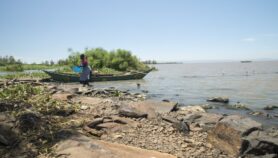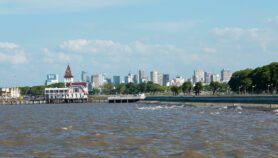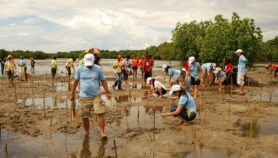Send to a friend
The details you provide on this page will not be used to send unsolicited email, and will not be sold to a 3rd party. See privacy policy.
Remote light sensing technology has revealed that the fragmentation of the Amazon rainforest contributed one-third of deforestation carbon emissions in the region between 2001 and 2015.
Deforestation fragments forests, creating artificial edges and altering forest ecologies — known as ‘edge effects’.
“森林边缘更容易暴露于太阳,它会使植被干燥并升高当地温度,”研究的主要作者Celso Silva JuniorpublishedinScience Advances(30 September), tellsscidev.net。
巴西国家航天研究所的研究员LuizAragão合着者路易斯·阿拉格(Luizaragão)补充说,较高的局部温度,较少的湿度和更多的风会改变森林的气候。
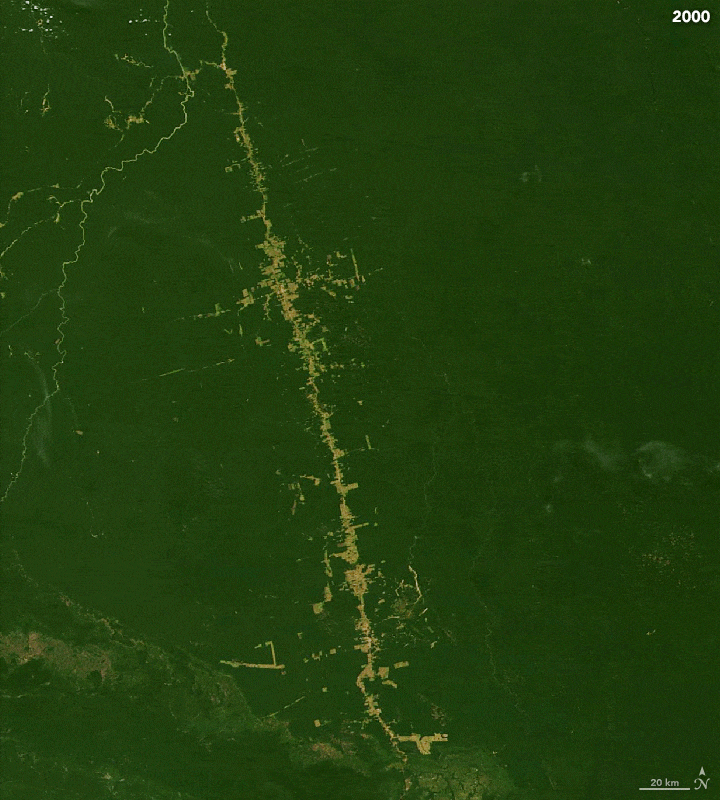
“森林used to a specific climate become exposed to a different one and trees start to die. So, edge effects are quite strong in newly deforested areas, but they continue over time until the trees adapt to this new environment,” Aragão says.
How LiDAR works
LIDAR(光检测和范围)用于测量距离,最常见于卫星和飞机中,但也用于激光指导和自动驾驶汽车。
Silva Junior的国际研究人员团队使用LiDAR来绘制新森林边缘和较旧的森林边缘的生物量损失,并将发现与相邻的,不受干扰的地区进行了比较,以计算碳损失。
激光雷达(LiDAR)“与测量地面上树木的研究人员进行的测量一样准确。不同之处在于,它可以在更少的时间内覆盖更多的区域。”Aragão说。
“森林used to a specific climate become exposed to a different one and trees start to die. Edge effects are quite strong in newly deforested areas.”
Luiz Aragão, Brazil’s National Institute for Space Research
The technology works like a large 3D scanner, emitting a ‘cloud’ of infrared lasers — similar to the way radar uses radio waves and sonar uses sound waves — Aragão explains.
激光点的云扫过该区域,撞到树冠和地面,并测量两个点之间的距离。
The use of infrared light is an important feature of the technology. “The advantage of using infrared is that it captures heat to make images of vast areas,” says Victor Hugo Danelichen, a professor at the University of Cuiabá, Brazil, who did not take part in the study.
巴西国家亚马逊研究所研究所的研究员弗拉维亚·科斯塔(FláviaCosta)说,这项研究提供了对边缘效应的碳排放量的量化,这是科学家长期以来对的。
“This methodology should be included in impact reports,” she tellsscidev.net。Costa adds that research at this scale conducted by satellites typically uses a coarser resolution and only considers deforestation, not edge effects.
Michael Keller, a researcher at the United States Forest Service, says measuring tree height with accuracy is important, because “forest height is intimately related to carbon stocks”.
Keller is one of the leaders ofSustainable Landscapes Brazil, a project that performs LiDAR surveys in the Amazon, Cerrado savannah and Atlantic Forest, and which provided LiDAR data for the study.
To Aragão, the study’s findings show that deforestation must be stopped.
“[W]here tree removal is needed, there must be more planning on the geometry of forest clearings to avoid edge effects as much as possible,” he says.
这项研究得到了scidev.net供体FAPESP的支持。


